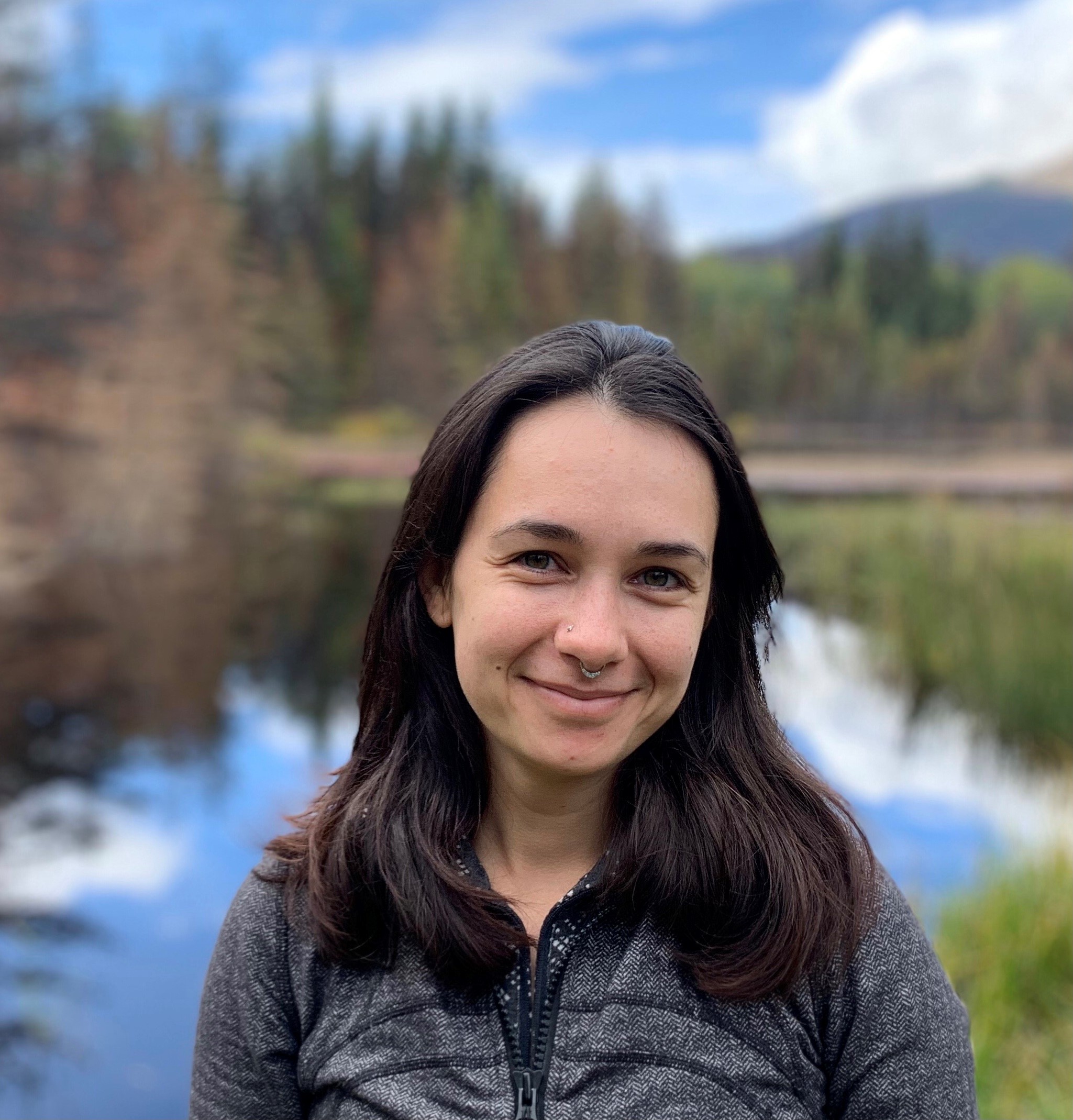Stories of Stewardship: what is stewardship and how is it practiced in a watershed?
Written by Danielle E. Barry
In preparation for our upcoming “Stories of Stewardship” Webinar this November, this month’s blog post is covering what stewardship is, as well as what it looks like at the local scale in the Vermilion River Watershed (VRW). Most basic definition of stewardship is “the conducting, supervising, or managing of something; especially the careful and responsible management of something entrusted to one’s care.” (Merriam-Webster).
Stewardship in a watershed (often interchangeable environmental stewardship) is the recognition of a collective responsibility to retain the quality and abundance of land, air, water and biodiversity, and to manage this natural capital in a way that conserves all of its environmental, economic, social and cultural values. Wetlands and riparian areas are ecosystems that perform vital ecological services in a watershed. They store water, manage flooding, retain sediment and contaminants, serve as a habitat and food source for wildlife, maintain biodiversity, and offer leisure and natural scenic beauty.
These services help people, other living things, and the overall health of natural systems that are linked within watersheds. Citizens, watershed stakeholders, and conservation groups know that wetlands and riparian areas must be protected and restored to create sustainable watersheds. This type of stewardship comes in many different forms and is not one size fits all approach.
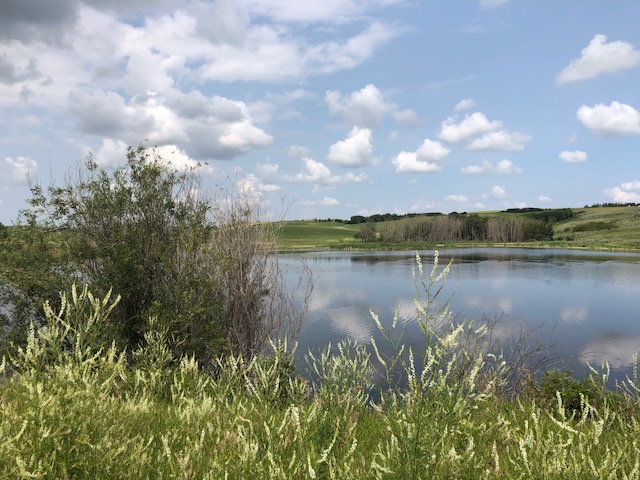
"The term environmental stewardship has been used to refer to such diverse actions as creating protected areas, replanting trees, limiting harvests, reducing harmful activities or pollution, creating community gardens, restoring degraded areas, or purchasing more sustainable products. It is applied to describe strict environmental conservation actions, active restoration activities and/or the sustainable use and management of resources. Stewardship actions can also be taken at diverse scales, from local to global efforts, and in both rural and urban contexts."
Bennett, N.J., Whitty, T.S., Finkbeiner, E. et al. Environmental Stewardship: A Conceptual Review and Analytical Framework. Environmental Management, 2018
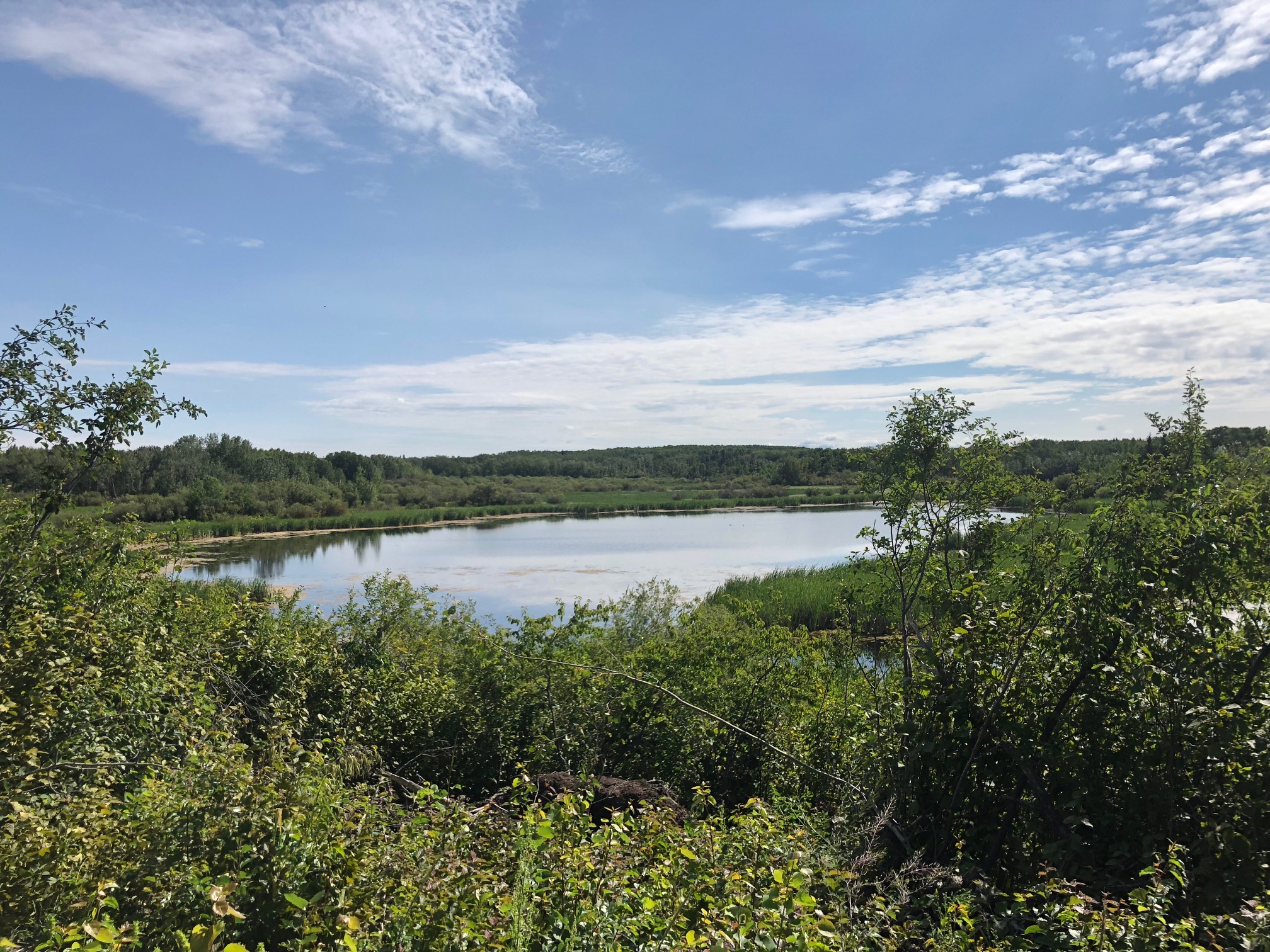
Starting in 2015, the Vermilion River Watershed Restoration and Enhancement Project has been implemented to address some actions recommended as part of the Watershed Management Plan for the VRW. Over 30 landowners have implemented various types of projects on their land, and together, are enhancing over 20 kilometers of riparian areas and 150 hectares of wetlands. There are many benefits of wetland and riparian areas.

Riparian Fencing used to keep livestock away from waterbodies to protect the water quality and the surrounding riparian area. This prevents soil compaction as more sponge-like soil helps filter and store water. These fences also allow for the creation of riparian pastures, which can be part of a strategic livestock grazing plan.
Off-stream watering systems use a pump to pull water from a dugout or other waterbody and fill a trough some distance away. This protects the water quality and riparian edges, while evidence suggests that livestock gain weight more quickly when using these water systems instead of direct from the source, creating a win-win for the livestock operation and the ecosystem.
Revegetation includes seeding bare patches along waterbodies with native grass seed or planting site-appropriate tree seedlings. This mitigates soil erosion as deep-binding root systems help to build and reinforce stream banks. Riparian trees also shade the water and thus regulate water temperature and provide important bird and wildlife habitat.
These projects were funded through the Watershed Resiliency and Restoration Program of the Government of Alberta and federal funds from Environment and Climate Change Canada. Some examples of these stewardship projects are listed below.
Beaver County
This Beaver County landowner wanted to do his part in contributing to a healthy, sustainable watershed. In addition to fencing around two wetlands on two different quarters and using off-stream watering practices, he also seeded a perennial grass butter strip between his cropland and the wetland area to further enhance riparian function.
Riparian Fencing
Off-stream watering system
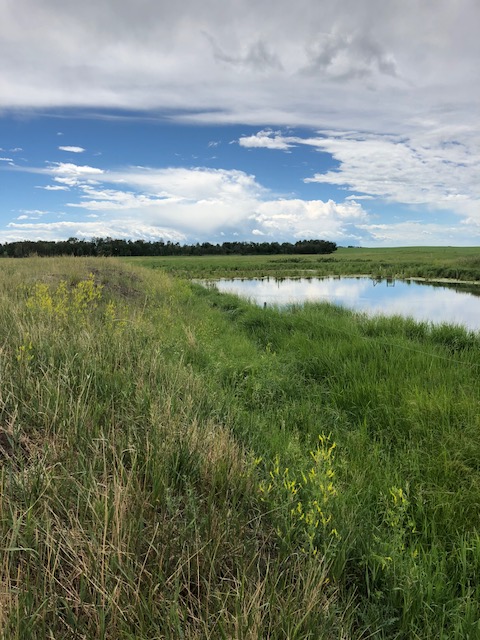
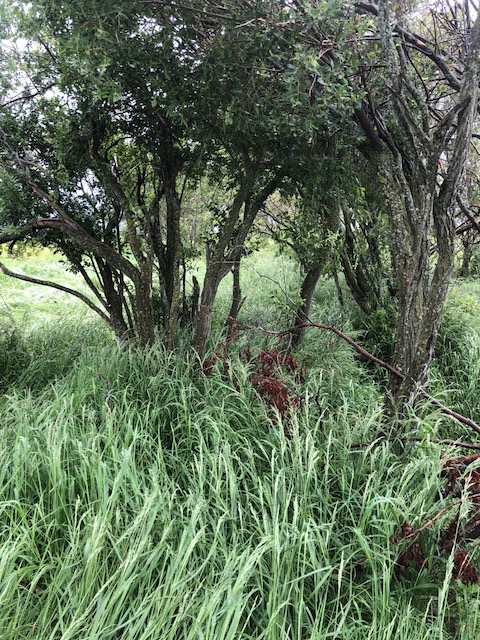
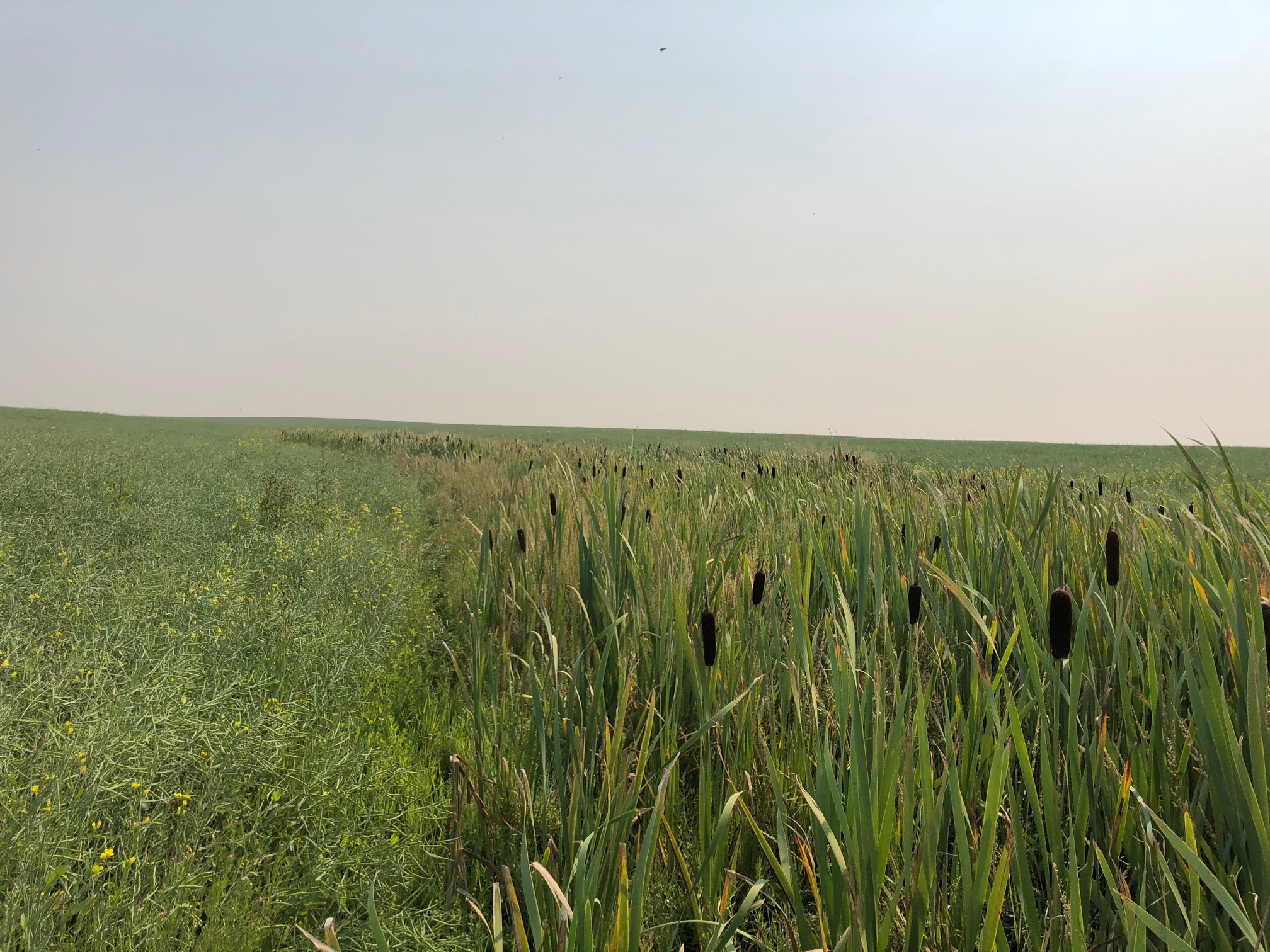
County of Minburn
Riparian vegetation filters sediment and reduces water speed. This allows for better nutrient uptake and water storage, which helps mitigate the negative effects of flood and drought. Years of cultivation and resulting bare soil on this County of Minburn site had resulted in eroded banks and washouts within this waterway that flowed seasonally through a cropfield. By stabilizing the soil and re-seeding the waterway with perennial grass species, the landowner was able to enhance the waterway’s natural ecosystem functions. Cattails waiting in the seedbank for the right conditions to come back also re-emerged.
Revegetation
Two Hills County
Carrying on her family’s legacy, this landowner knew that environmentally friendly agricultural practices were a win-win for both the environment and the business operation. Growing up, she witnessed positive ecological changes when her father used rotational grazing and off-stream watering systems, particularly during drought. She implemented similar practices on her own County of Two Hills quarter as well as riparian fencing to allow the shoreline vegetation to recover and also to create a riparian pasture that would strategically be grazed to manage invasive species. Through her example and experience with the VRWREP, she hoped “to encourage neighbours and successors to do the same.”
Riparian Fencing
Off-stream watering system
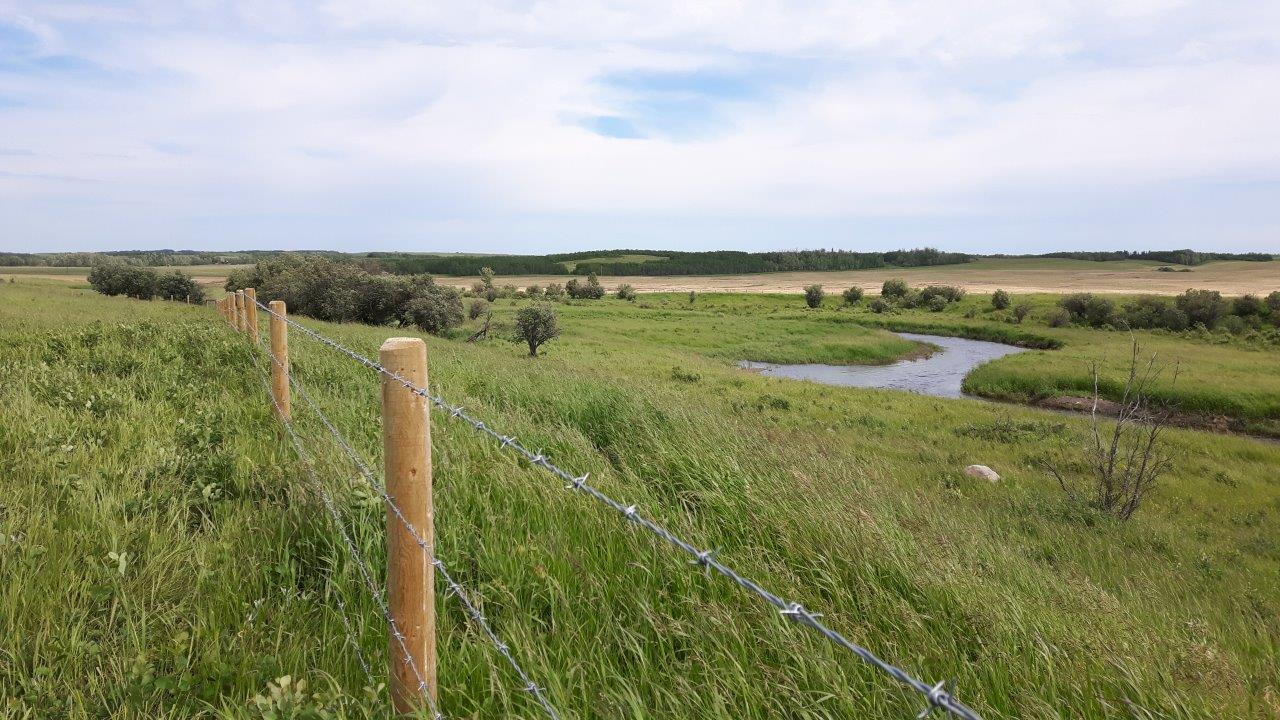
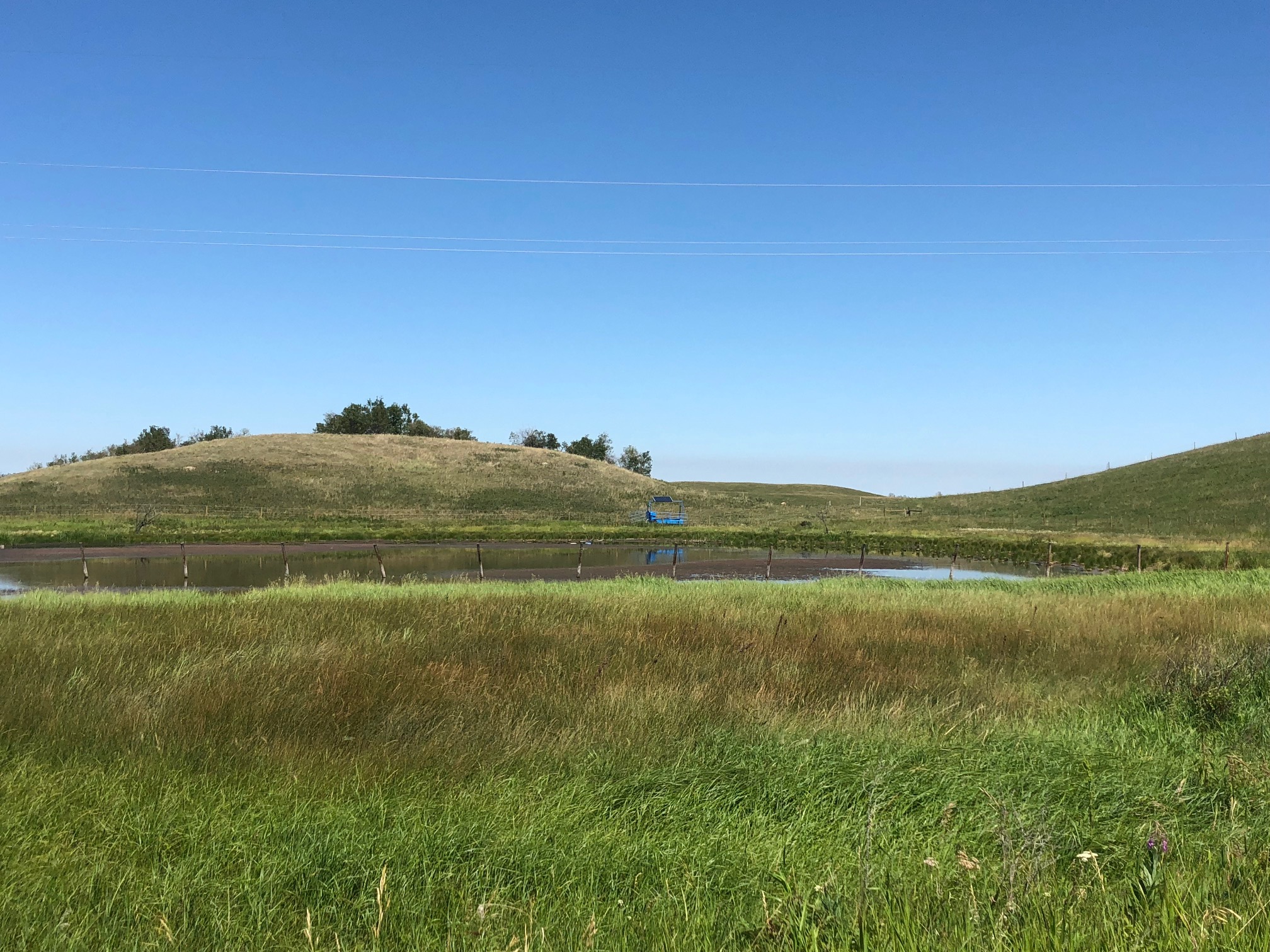
County of Vermillion River
This County of Vermilion River landowner wanted to protect two wetlands and a waterway that flows seasonally through the site. In the past, cattle grazed freely in both areas which resulted in stunted willow growth, bare ground patches, and compacted soil. Wildlife-friendly fencing controls cattle access out while allowing wildlife to safely access wetlands. An off-stream watering system ensures the cattle have a healthy water supply. The landowner noted that these changes will not only save on operational costs but put important nutrients back into the soil.
Riparian fencing
Off-stream watering system
Revegetation
Given the scope of these example projects, many different groups are often involved in stewardship. In the VRW these groups often include the Vermillion River Watershed Alliance, North Saskatchewan Watershed Alliance, Government of Alberta, Environment Canada, municipal governments, landowners and other stakeholders. However, being an environmental steward does not only include big changes and projects. Listed below are some ways to become a steward from the Land Stewardship Centre:
Land Stewardship Centre: Become a Steward
Once you make a commitment to becoming an environmental steward, put that commitment into action. You can help set stewardship in motion by:
Abiding by environmental regulations – Ensure that business activities, farm operations and personal land use are in compliance with all applicable environmental regulations.
Using resources responsibly – Conserve resources such as water, minerals and wood by using them efficiently and recycling when appropriate. Conserve wildlife habitat on your property and in your community.
Reducing waste – Use less toxic materials to limit the amount of hazardous wastes produced. Improve the efficiency of business or farm operations to reduce the amount of waste generated.
Getting involved in community initiatives – Participate in local environmental projects such as neighborhood recycling, abandoned lot cleanups, community gardens and watershed restoration projects. Encourage others to become involved as well.
Letting people know what you are doing – Get the message out about the successful environmental projects implemented by you or your community.
You can find a list of local stewardship groups at: Alberta Stewardship Network
Keep an eye out for more information on the upcoming Stories of Stewardship Webinar in November. Below is a fantastic video highlighting these projects and the landowners behind them.
